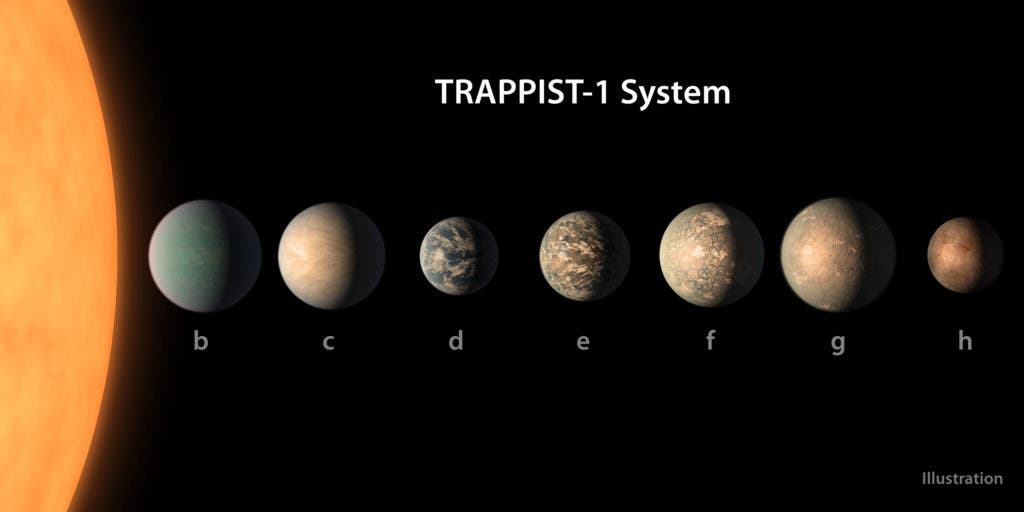
Exoplanet researcher Ignas Snellen — a professor in astronomy at the University of Leiden in the Netherlands — has collected the 2019 Hans Sigrist prize for his innovative work in the field of exoplanet research. The award of the prize to Snellen comes at the conclusion of a year which also marked the Nobel Committee’s recognition of the first observation of an exoplanet orbiting a Sun-like star, awarding its discoverers Michel Mayor and Didier Queloz the 2019 Nobel Prize in Physics.
The message from the scientific community seems to be clear, exoplanet research is a field to watch. With the launch of the CHEOPS satellite, later this month and the James Webb Space Telescope set to launch in 2021, applied science is finally catching up to aspirations held by astronomers for decades–the discovery of more and more diverse worlds outside our solar system.
In addition to this, the tantalizing possibility of catching a fleeting glimpse of a clue that we are not alone in the universe seems closer than ever to realization.

But as Snellen explains, things could have been very different for him, falling into exoplanet research was something of a happy accident: “I was doing very different research, working with galaxies,” he says. “I didn’t really know where my research was going. That’s when I was asked to present a workshop on extrasolar planets.”
Despite the serendipity at play, Snellen says he recognised the potential growth for the young field almost immediately. “I thought ‘wow, what an amazing field!'”
And Snellen’s decision to pursue exoplanet research relates indirectly to Nobel prize winners Mayor and Queloz. “This was in 2001, so exoplanet research was still in its infancy, but the first transiting exoplanet had been discovered as well as a few others.”
Despite the fact that only a handful of exoplanets had been discovered when Snellen began his research in the field less than two decades ago, NASA’s catalog of extrasolar planets now numbers in excess of 4,000. Clearly, this is a stunning illustration of just how rapidly the field has advanced in this relatively short period of time.
Snellen’s work focuses on assessing the atmospheric composition of exoplanets. This possible to do when a planet passes in front of–or ‘transits’– its parent star. The planet’s atmosphere absorbs light from the star at certain wavelengths. As chemical elements absorb and emit light at certain frequencies, the resulting light spectrum forms a distinct ‘fingerprint’ by which they can be identified.
This method of transit spectroscopy holds great promise in terms of identifying potential ‘biomarkers’ such as molecular oxygen, water and carbon monoxide.
As the Hans Sigrist Prize is specifically designated to recognize scientists in the midst of their careers rather than acting as a ‘lifetime achievement’ type award, it is only fitting that its recipient should very clearly have their eyes on future goals. And, fortunately, the future is bright for exoplanet research.

The ESO’s CHEOPS telescope launches on 17th December with its mission to identify nearby, small rocky exoplanets. Snedden points out the mission’s role as an important first step in the exoplanet research, helping select targets for researchers to further investigate.
But the two projects that Snellen is most excited for and the launch of the James Webb Telescope in 2021 and the completion of the aptly named 39-meter diameter Extremely Large Telescope (ELT) scheduled for completion in 2025.
“At the moment we can only observe the atmospheres of large Jupiter-like gas giants,” he explains. “The James Webb will finally allow us to start examining the atmospheres of smaller, rocky, more Earth-like exoplanets.”
These planets will still differ quite a bit from Earth, elaborates Snellen, explaining that they will, for example, be much hotter than our planet. “The exciting thing is, we don’t yet know if these small rocky planets can actually hold an atmosphere,” Snellen says.
The researcher concludes by pointing out that the seven Earth-like planets of the Trappist-1 system are very likely the first targets for further investigation. An exciting prospect, given that at least three of these planets are believed to exist in that system’s ‘habitable zone’–an area where water can exist as a liquid, a key ingredient for life.
One of the most promising prospects for discovering liquid water in the Trappist-1 system is Trappist-1e, an exoplanet that is slightly denser than Earth. As liquid water requires a temperature that is not too hot and not too cold, and also a certain amount of pressure–the fact that Trappist-1e receives roughly the same amount of radiation from its star as Earth and its gravitational influence exerts a similar pressure, it seems a safe bet to predict liquid water will be found there.
Of course, the concept of discovering liquid water amongst the stars and drawing comparisons to Earth leads, inevitably to the question could any of these planets also host life?
Snellen urges caution, remarking that even if these biomarkers are found, it is still a long way from confirming the ‘Holy Grail’ of exoplanet research: the presence of extraterrestrial life.
“It would be a major clue,” Snellen points out. “But it’s too simple to say ‘OK we have molecular oxygen, this is a sign of life.’ As molecular oxygen is difficult to detect though, by the time we can identify it, we should also be able to see lots of other gases.”
The Hans Sigrist Prize was established in 1994 to recognise mid-career scientists who still have a significant time left in their careers to make further major contributions to their field. Thus far, two of the previous recipients have gone on to become Nobel Prize Laureates later in their careers.
In connection with the prize, Snellen will receive 100,000 CHF–around $100,000–to help further his research. Accepting his prize, Snellen first thanked the team of researchers that have supported him in his research over the past decade.


